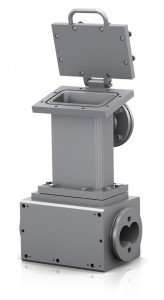 KraussMaffei Berstorff offers optimized ZE twin-screw extruder components tailored to the processing of wood plastic composites (WPC) in order to configure the ideal processing section for any application. With these optimized features, the melt temperature is decreased by about 10 percent while higher output rates are achieved.
KraussMaffei Berstorff offers optimized ZE twin-screw extruder components tailored to the processing of wood plastic composites (WPC) in order to configure the ideal processing section for any application. With these optimized features, the melt temperature is decreased by about 10 percent while higher output rates are achieved.
Continuous increase in WPC production at international scale
“Owing to their favorable properties, convenient price, and high environmental compatibility, products made of wood-plastic composites have also become very popular in Europe for indoor and outdoor applications, with annual growth rates of up to 25 percent. WPC decking profiles in particular are in high demand,” reports Kai Schwedthelm, responsible for process engineering development in compounding and processing of bio-plastics at KraussMaffei Berstorff. “The perfectly adapted modular screw and barrel system make co-rotating twin-screw extruders the ideal solution for processing shear- and temperature-sensitive WPCs.”
Technical features for process optimization
The KraussMaffei Berstorff engineers have now succeeded in implementing numerous optimized features along the processing section to meet the specific material requirements of WPCs. “A special highlight is the innovative combination of kneading and multi-process elements in the plasticizing zone that reduces the melt temperature by about 10 percent while the melting efficiency remains identical with that of standard screws,” explains Kai Schwedthelm. In addition, KraussMaffei Berstorff has also succeeded in adapting the screw configuration in the fiber feed area to achieve even better results. The same applies to the mixing section where the unique multi-process elements reduce the temperature by about 10 percent, which additionally contributes to substantially improved material quality.
Further process benefits in WPC processing are achieved by the 6D-long combined barrel elements, which are a typical feature of ZE extruders: these elements allow the wood proportions to be efficiently incorporated and the air trapped during the process to be removed at an adequate distance in process engineering terms. For degassing the 12 % residual moisture content in the natural fibers in particular, the degassing openings, 6D long, ensure high process reliability at low gas velocities. The hold-down systems that are frequently needed in these applications are not required with this configuration.
Finally, the extruder is equipped with a ZSFE side feeder with special Ultra Feed vacuum technology that gives higher output rates by increasing the apparent density of light filler materials. “With this side feeder design, the total output rate in WPC processing can be increased by a factor of 2.5 compared with conventional lines,” declares Kai Schwedthelm.
Source
KraussMaffei Berstorf, press release, 2015-01-14.
Supplier
Share
Renewable Carbon News – Daily Newsletter
Subscribe to our daily email newsletter – the world's leading newsletter on renewable materials and chemicals









